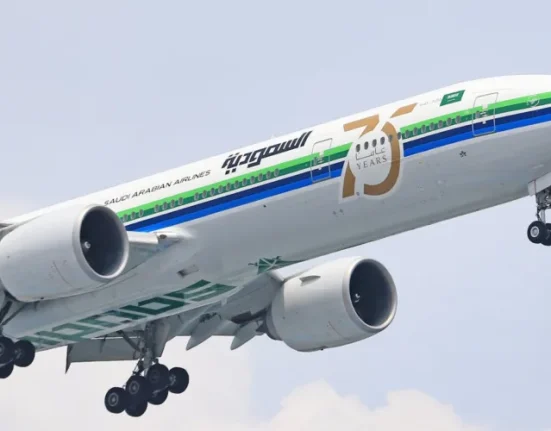As the global Muslim community gears up for the annual Hajj pilgrimage, Saudi Arabia has intensified preparations by activating a robust and far reaching road transportation plan designed to ease the movement of pilgrims coming from neighbouring countries across the Gulf and broader Middle East. With the Hajj 2025 season approaching, authorities in the Kingdom have confirmed that major road routes connecting to Mecca are fully operational, following rigorous inspections and upgrades to ensure the safety, comfort, and timely arrival of the faithful.
Pilgrims travelling from the United Arab Emirates will journey along the Batha–Salwa–Hofuf–Riyadh–Taif–Mecca corridor, covering a distance of about 1,514 kilometres. Similarly, those coming from Kuwait have the choice of two well-established routes. The first passes through Khafji, Nu’ayriyah, and Riyadh en route to Mecca—a journey of approximately 1,473 kilometres. The second, slightly shorter at 1,277 kilometres, begins at Raqqa’i and proceeds via Hafr Al Batin and Majma’ah before reaching the Holy City.
For pilgrims from Qatar, the designated path runs from Salwa to Hofuf, then through Riyadh and Taif before concluding in Mecca. This road spans roughly 1,385 kilometres. Bahrain-based pilgrims commence their journey via the King Fahd Causeway, connecting them to the Saudi city of Khobar. From there, the journey continues through Riyadh and Taif, ending in Mecca with an estimated total distance of 1,266 kilometres.
From the southeastern region, pilgrims from the Sultanate of Oman travel through the expansive Rub’ al Khali desert road network to reach Mecca. Meanwhile, pilgrims from the Hashemite Kingdom of Jordan typically follow two key northern routes. One starts from Halat Ammar, runs through Tabuk and the city of the Prophet, Medina, and concludes in Mecca—this road stretches for approximately 1,219 kilometres. The second option begins at Al Hadithah, continues through Al Qurayyat and Sakaka, before merging with the Medina-Mecca road for a total travel distance of around 1,545 kilometres.
Iraqi pilgrims are expected to take the Jadidat Arar–Sakaka–Medina–Mecca route, which spans approximately 1,579 kilometres. In the southern axis, pilgrims from Yemen will travel the Al Wadiah–Najran–Abha–Mecca route, with the full journey measuring about 1,372 kilometres.
To support the immense logistical demand of the pilgrimage season, Saudi Arabia’s Roads General Authority has completed comprehensive inspections on all major roads leading to the Two Holy Mosques in Mecca and Medina. These evaluations aim to guarantee the structural integrity, cleanliness, and navigational safety of the roadways.
In tandem with the road upgrades, the Saudi Transport General Authority (TGA) has mobilised a fleet of over 25,000 buses and more than 9,000 taxis to serve pilgrims during their transit and stay in the Kingdom. As part of TGA’s broader Hajj transportation strategy, 180 inspection supervisors have been deployed across 20 critical locations—including all entry points into Mecca and Medina and other sacred landmarks. These officials are tasked with enforcing safety and service quality protocols across the transportation network.
With millions expected to make the sacred journey this year, Saudi Arabia’s integrated transport and road readiness programme signals a determined effort to ensure that the movement of pilgrims is smooth, secure, and in line with the spiritual and logistical demands of Hajj 2025.







